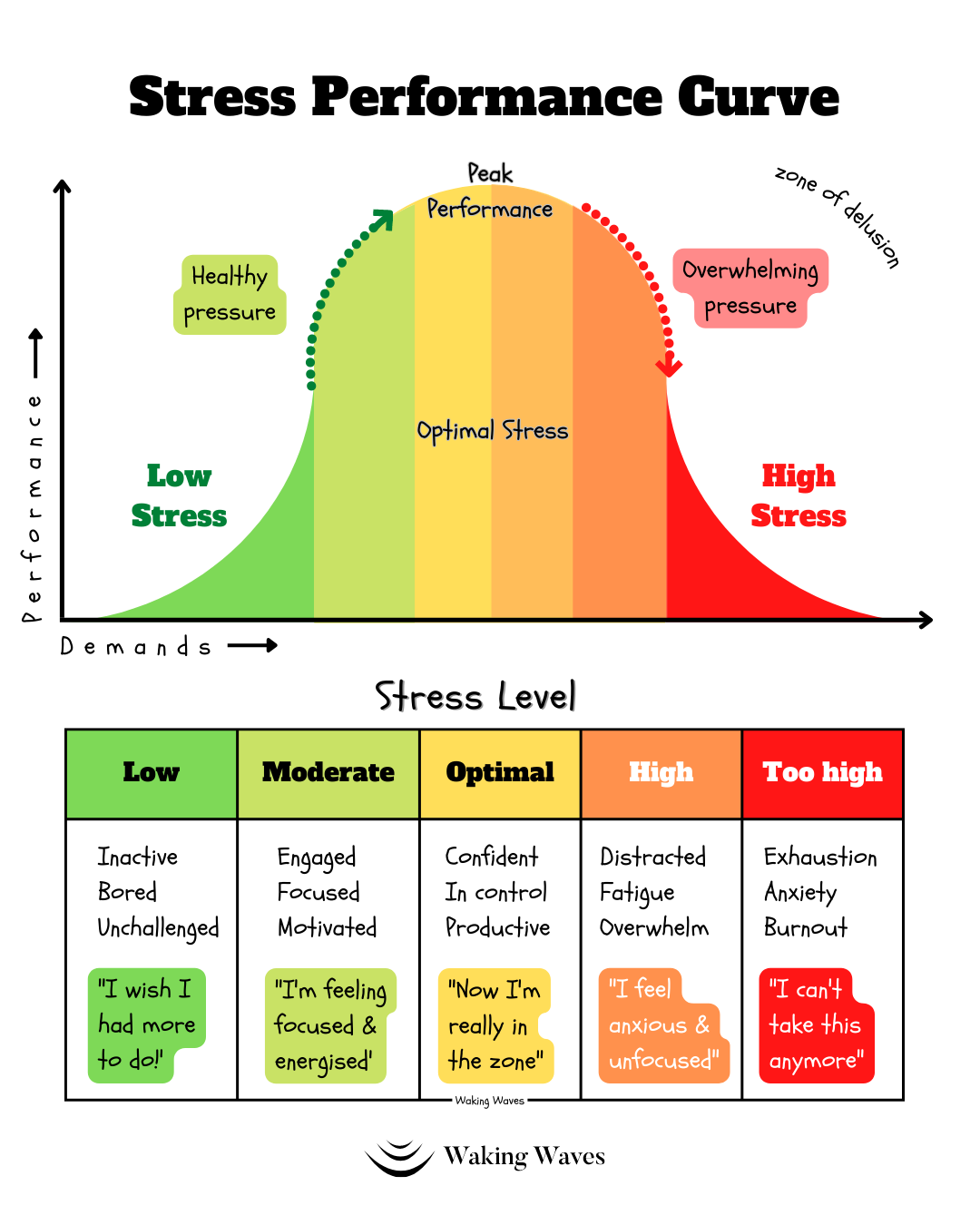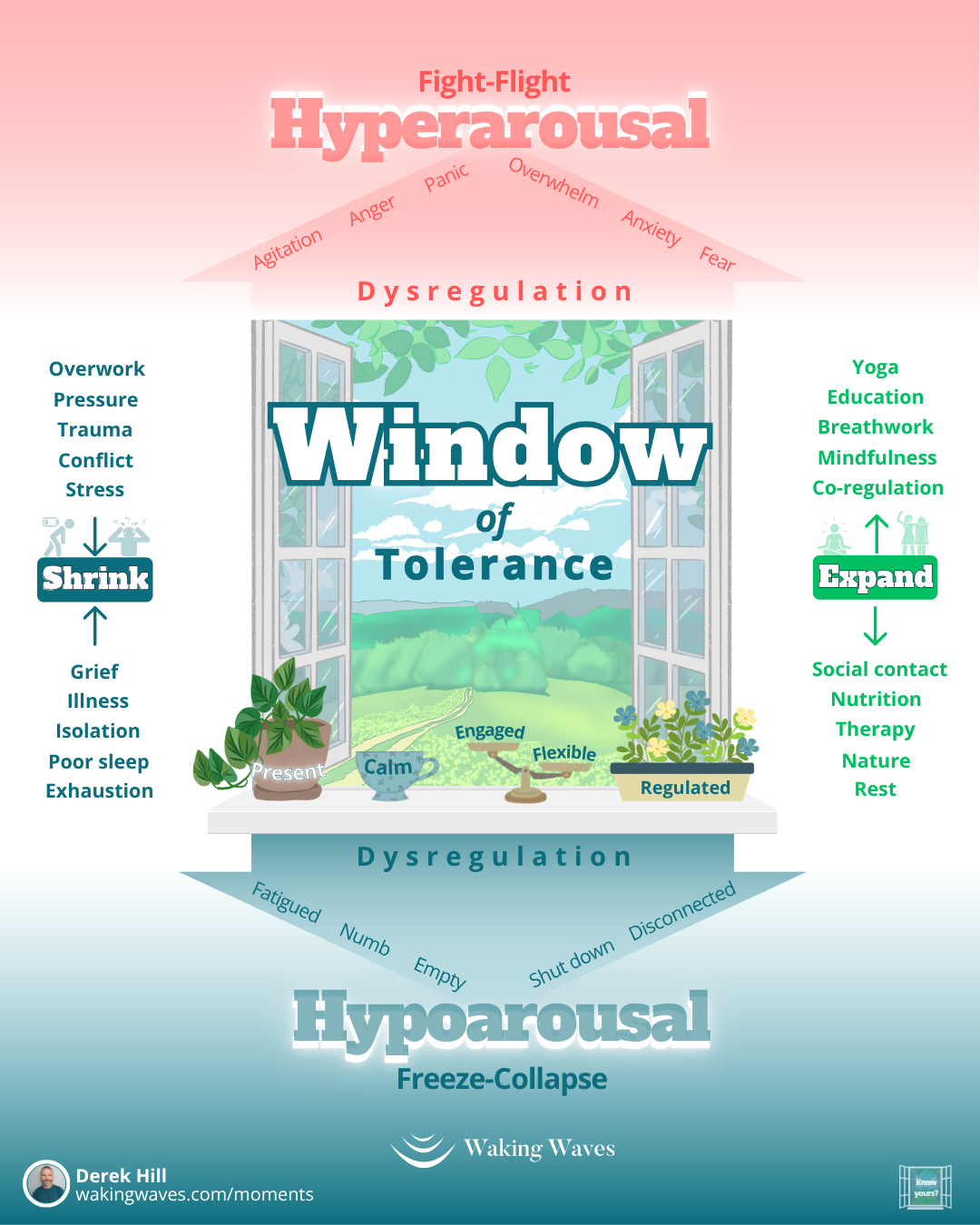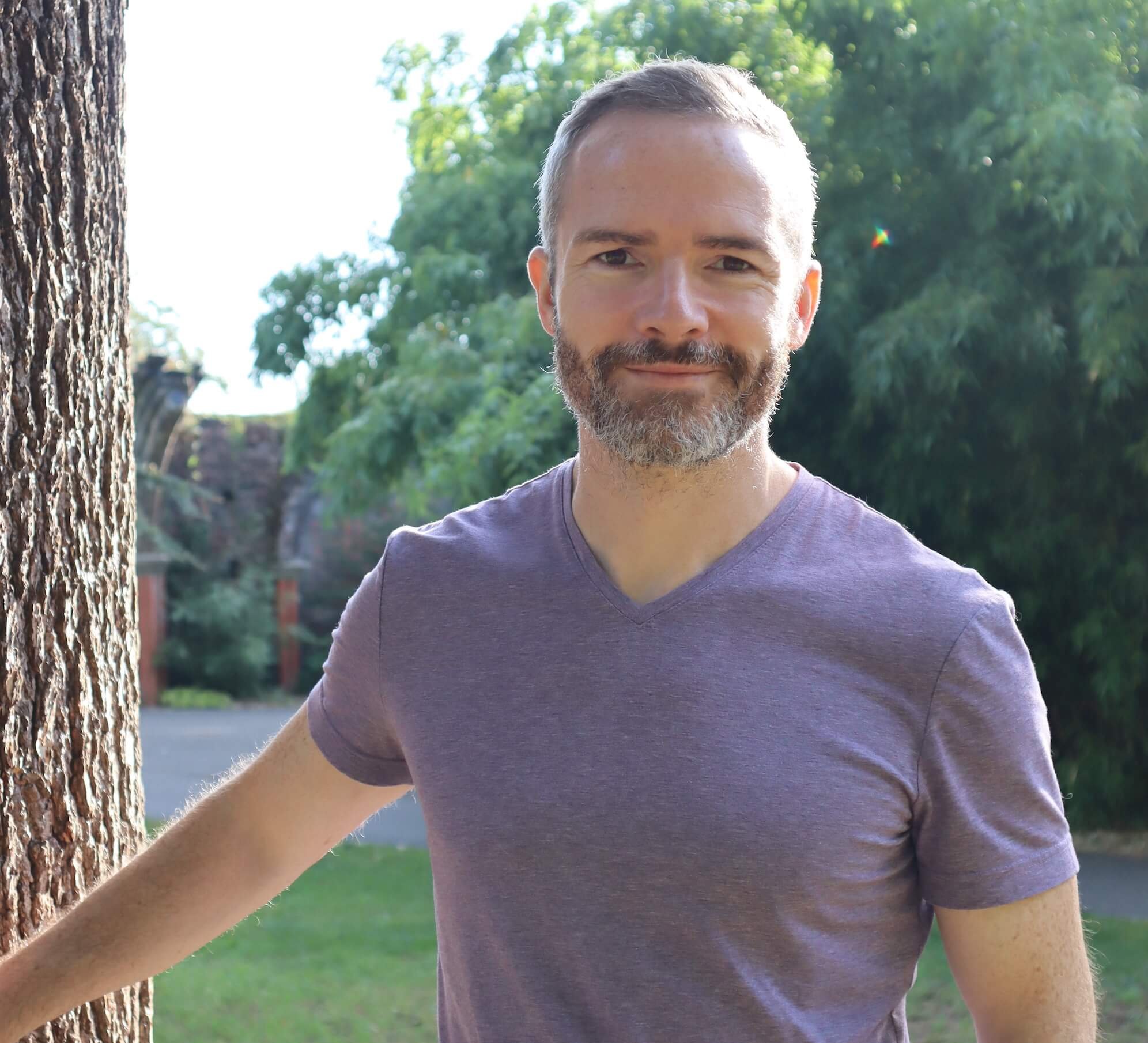Getting in the zone on the Stress Performance Curve
skip to “The Window of Tolerance”
When it comes to Stress at work, no one wants to be ahead of the curve.
“What’s this Stress Performance Curve got to do with it?
“And how do I get into the right zone?”
The Stress Performance Curve is based on “The Yerkes Dodson Law” which states that our performance improves, as pressure (stress) increases. But only up to a point:
😐 Too little: we are bored, de-motivated
😁 Just right: we are high performing!
😰 Too much: we are overwhelmed.
“Great, I’ll go for that Goldilocks zone 🥣…”
...but hold on, how do I know ‘how stressed’ I am?”
Good question! Often…
- We are unaware of our stress levels.
- We may deny feeling stress.
- We are too overwhelmed.
And we can pass through the Stages of Stress before we notice the impact on our health and wellbeing, on our relationships with others and on our performance at work.
“Yeah, there are times when I’ve felt all of these!”
Exactly, it can change. And people respond to stress differently too. We have different levels of stress resilience. And we have have very different ‘optimal’ stress zones depending on the job roles, tasks or activities we perform.
So it’s certainly a guide, rather than how everyone’s performance increases and decreases in relation to stress levels.
The Stress Performance Curve
Low Stress
Moderate
Optimal
High
Too high
Image: Yerkes Dodson model adapted by Waking Waves. Inspired by other creations!
(If re-sharing, please tag / reference Waking Waves keeping visual intact)
Here’s 4 steps to help get you “in the zone”
1️⃣ Self-Assessment
You can self-assess, using tools like the “Perceived Stress Scale”. Or keep a journal to track your stress levels. Involve your colleagues and teams too!
2️⃣ Stress-Awareness
There are 4 types of stress - Acute, Episodic-acute, Chronic and Eustress. Chronic Stress can lead to burnout. Eustress can boost energy levels and potentially increase performance.
3️⃣ Boundaries and workload
Whether a leader or in a team, we all need healthy boundaries to protect work-life balance. No one needs more work than they can manage.
4️⃣ Self-Awareness
Is the ultimate key to getting in touch with stress. And to discovering more ways to manage it, e.g., exercise, mindfulness, creativity, rest or social connection.












The Stress Models
General Adaptation Syndrome model by Hans Selye
Allostatic Load model by McEwen and Stellar
More resources on LinkedIn
How do I stay ‘in the zone’ when it comes to stress?
The Window of Tolerance
To learn more mindful ways to manage your stress, or to arrange a talk, workshop or course, book a short discovery call today.
Wishing you a wonderful day,
Derek
Waking Waves
📧 hello@wakingwaves.com
☎️ book call to discuss courses or coaching







75 page glossy magazine illustrating creative and educational mindfulness and stress management infographics, with special access to hours of premium video, audio courses, guided mediations and a wellbeing resource centre
🎨 52 x downloadable infographics
🎥 20 x animated guides and videos
🎧 3 x premium audio courses (6+ hours)
👩💻 2 x Mindful Stress Management courses
🧰 1 x Wellbeing resource centre